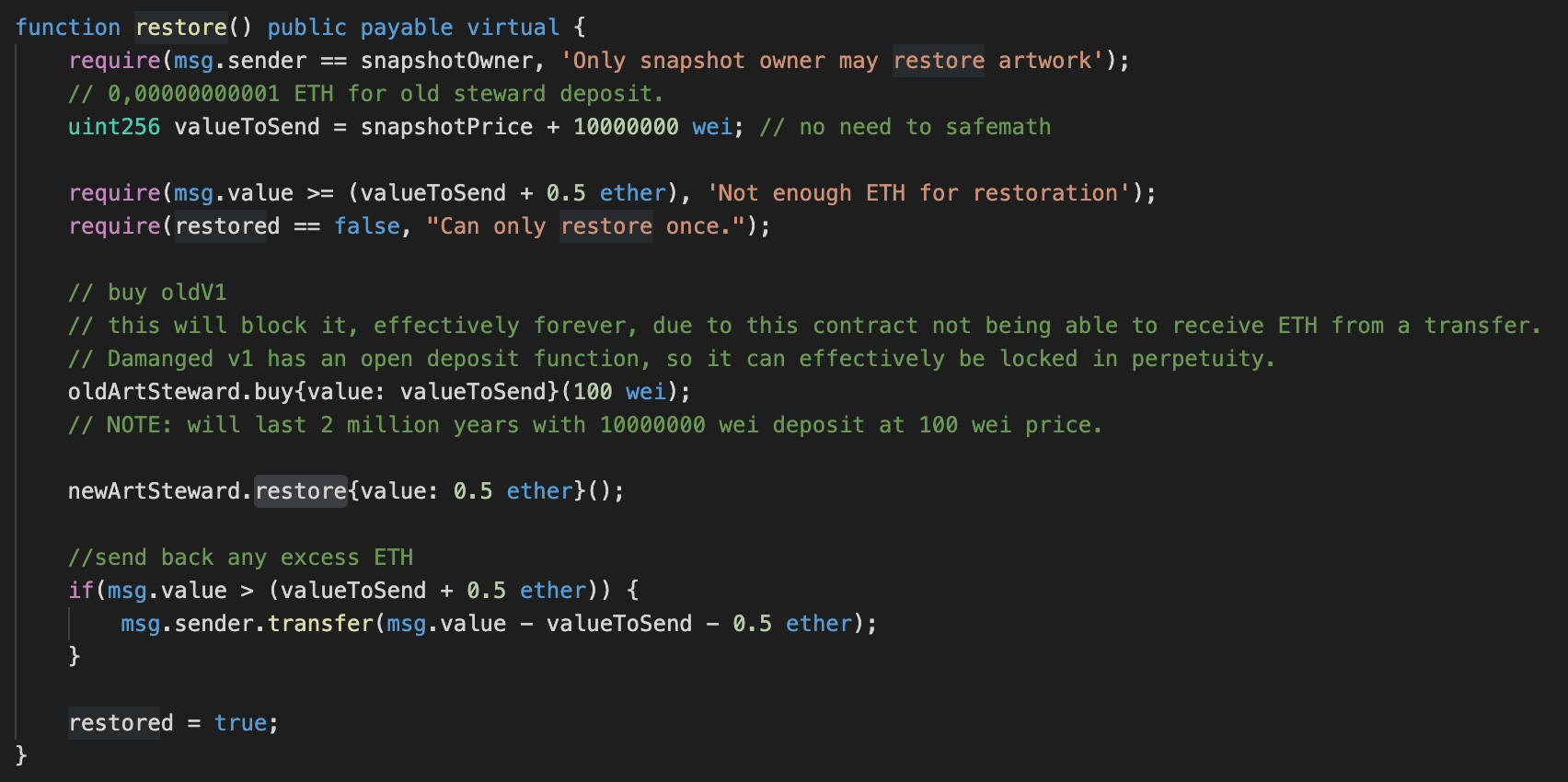Time-As-Platform: Ether’s Phoenix & The Memorial Monument
Due to the ever-growing immutable history of blockchains, the longer they exist, the more possible it becomes to interact (and transact) with the future and the past. It brings about strange, emergent outcomes that include: hyperstructures (free, yet valuable infrastructure), abundant retroactive funding (Ether’s Phoenix), and re-animating the dead. After just over a decade of existence, time-as-platform is slowly emerging and could redefine all manner of new social structures, art, and philosophical questions.
The Story of Restoring A Digital Artwork That Is Always On Sale
Art restoration & conservation is a natural part of the lifecycle of physical art. In some cases, like in Japanese Kintsugi, the repair of an object is made visible, and is seen as desirable. What happens in the case of a digital artwork NFT? Or, perhaps, even more complicated: what happens in the even that it is also an artwork that is always on sale? Due to damage in the first artwork that is always on sale, along with the help of the patron, I restored it.
Seasons & Longevity of Community Tokens
Recently, there's been quite an interesting exploration of social/community/creator tokens. $JAMM, $RAC, $ALEX, $JOON, etc, all tokens either resolving around people, a brand, or a specific community.
Teams like Zora, Foundation, Rally, Roll, StakeOnMe, etc, are helping tackling the problem of empowering creators through these new novel economic systems. Recently, Zora helped the musician, RAC, launch his own community token. Particularly interesting, was how RAC launched the token by retroactively rewarding fans and contributors. To continue longevity, I propose the concept of seasons in community tokens.
Experimental Land Rights in Virtual Reality
Virtual reality is a prime space to experiment with property rights because space is infinite. What is finite, however, is distance to experience. If land can be infinite, then locating close to meaningful virtual experiences is what becomes valuable. This provides ample opportunity to experiment with new property rights, all perhaps, even in the same virtual space.
A few weeks ago, I had a chat with the Cryptovoxels community on ideas on how to increase or decrease land in this decentralized virtual space. I want to share two such ideas: a COST (Harberger Tax) zone, and a Bonding Curve zone. Both rely on land being minted and destroyed as desired. Both generate value back into the community.
Infinite Stories in Blockchains
These are my speaking notes from talk at the WIP meetup that formed part of the Virtual Rare Arts Festival that kicked off in Cryptovoxels. Looking at blockchains and how we could tell infinite stories with it.
Personal Tokens (2020 Edition) & Social Reputation
Recently, the topic of personal tokens started gaining traction again in the blockchain community. This is particularly driven by new tooling and platforms (such as Uniswap), enabling easy trading of personal tokens. This is a far cry from 2014, when I first proposed ideas around personal tokens. Back then, the only way to experiment with this was to launch your own blockchain. Glad times have changed.
New examples of personal tokens take various forms. I'll explain some of them, and then propose a new variant for liquid, social reputation tokens.
New Markets In The Arts #3: Markets as Medium
Markets themselves is an approximation of many individual self-interests, and thus it is a reflection of society. If we can utilize markets as a medium in art and not shy away from it, perhaps we might learn more about ourselves.
New Markets In The Arts #2: Generative Art Economies
Art is everywhere. This hasn't been more true in our modern era, where anyone, and ultimately any *thing* could create art. With powerful computers and the proliferation of machine learning, it's running head-first into art, and boy, is it fun. Somewhere, in all the latent space of potential art, lies patterns that will move us, and we can task our friendly mechanical friends with crypto-economics to go find them.
New Markets In The Arts #1: Property Rights
Blockchain technology has allowed us to re-imagine the arts. As a movement, it's been rife with seemingly disparate narratives: people adopting its cocktail of hashes & cryptography as a Rorschach test for their beliefs. It's simultaneously the most anarchist, most libertarian, most egalitarian, most socialist, most freeing, most authoritarian technology. I've always seen it as a tool empower creatives. In this post, I explore property rights experiments with new markets in the arts.
Maximising Blockchain Collectible Economies
What is the optimal size for a blockchain collectible (NFT) economy? How many unique items should be in a collection? How does one maximise the value of this economy? These are very interesting questions, because there's a trade-off between scarcity of a collectible economy & its inclusivity (allowing users to participate through ownership of a collectible). Currently, many projects in the space simply thumb-suck the size of their economies or employ unproven generation of new collectibles. The projects either generated too much or too little.
Patronage As An Asset Class
By combining the incentives of patronage, profit & collectibles, we can create a new tradable asset class that supports the funding of the commons. In addition to supporting artists and open source communities, this idea can be utilized to save our fragile planet from the ongoing effects of climate change.










